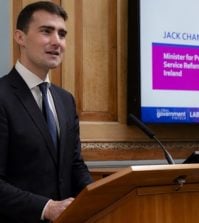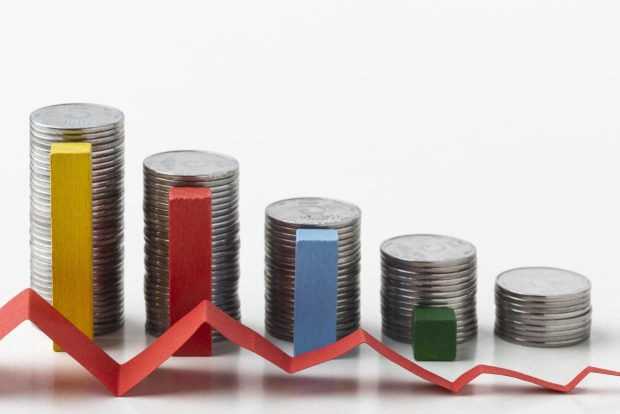A renaissance for development banks

Since the credit crunch, many private banks have retreated from lending to key economic sectors. So governments are stepping in – creating development banks to support start-ups and the industries crucial to sustainable growth. Gavin O’Toole investigates
“Market imperfections are the main reason for the existence of a development bank like KfW,” says Dr Jörg Zeuner, chief economist of the giant German financial group.
“It is very hard to argue the case that markets in all areas of our economy are so perfect that you cannot find misallocations of resources or projects not happening that should be happening, and which it is quite obvious will have a positive economic return.”
This candid recognition of market failure helps to illustrate why national development banks have experienced a renaissance in Europe since the 2007-08 financial crisis. Set up, part-funded and guided by governments, development banks are designed to boost sectors poorly served by their commercial counterparts and to pursue wider public goals, such as promoting investment in sustainability technologies.
While development banks are often associated with emerging economies, where they play a significant role in promoting growth, they are less frequently identified with regions where it might be assumed sophisticated financial markets provide ready access to capital.
For this reason, prior to the crisis the future of development banks in countries with large financial sectors was by no means guaranteed. Multilateral support for them cooled during the 1980s and 90s and many were restructured, privatised or closed. Some academics argue that as countries’ financial markets evolve, development banks disappear.
Development banks make a comeback
But those positions were challenged by the financial crisis, in which many national development banks – often referred to as ‘promotional’ banks – played an important counter-cyclical role by scaling up lending as commercial banks experienced credit difficulties.
Zeuner says: “After the crisis, some of those market imperfections mattered even more: if you have a commercial banking system recovering from a crisis, strengthening their balance sheets, adapting to new regulations, adapting to digitalisation, then [private banks] focus on core activities that are the least risky or most profitable.
“This meant that startups and other areas experienced much more difficulty accessing financing – and we were ready to step in.”
A recent global symposium on development banks explored their continuing relevance. One estimate puts the number of these at over 500, of which about a fifth were created in the last 17 years.

Dr Jörg Zeuner, chief economist of KfW Group (Image courtesy: KfW Bildarchiv/Gaby Gerster).
Europe leads the way
Europe is a hive of activity, with both the oldest and newest development banks in the world. The Network of European Financial Institutions for Small and Medium-Sized Enterprises (NEFI), for example, now has 19 members.
While some banks were established after the Iron Curtain came down in 1991, many have launched since the crisis. The Bulgarian Development Bank was created in 2008; France’s Bpifrance in 2012; the British Business Bank, Portugal’s Instituição Financeira do Desenvolvimento and the Strategic Banking Corporation of Ireland all in 2014; and the Latvian Altum bank in 2015. In the last quarter of 2017, the Development Bank of Wales was launched and the Malta Development Bank held its inaugural board meeting. The Greek government plans to create a development bank in 2018.
Some banks, such as KfW, also have international lending arms to support aid commitments – often referred to as development finance institutions (DFIs) – and members of the European association for these, EDFI, had an investment portfolio worth €38bn ($45bn/£33bn) in 2016.
EDFI chairman Nanno Kleiterp says: “Before the financial crisis the perception was that development bank financing was a huge risk but, suddenly, what happens? The commercial banks have significant risk in their portfolios and are making huge losses, while the development banks are still reasonably profitable, financing the real economy with a long-term view.
“So what the crisis in 2008 has shown is that this long-term view focused on financing the real economy and not inflating the transactions of the financial sector can go hand in hand with very reasonable profitability.”
The political divide
While in Germany there is broad political consensus about KfW’s role, debates elsewhere can split on political lines. In the UK, the launch of both the Green Investment Bank (GIB) and the British Business Bank was due to the Liberal Democrat Party’s inclusion in a coalition government with the Conservatives from 2010-15. The GIB was subsequently sold to pay off public debt, its commitment to environmental sustainability given protections whose value remains unproven. Recently, the UK’s left-of-centre opposition Labour Party proposed the creation of new national and regional investment banks modelled on KfW.
One of Europe’s newest institutions is the Development Bank of Wales, launched in October, which is set to invest more than £400m (US$540m) directly into businesses by 2021-22.
Giles Thorley, its chief executive, says a belief in the UK that banking was supportive of small businesses held until the crisis, when severe liquidity issues compelled the government to step in. At its peak, the scale of UK government support to banks reached £955bn (US$1295m).
Thorley says: “Certainly, the market dynamics have changed since then. Whereas you would have assumed you were going to your regular bank and they would support you through thick and thin, people have realised that is just not the case and that there has to be much more variety in the market – and that’s where we come in.”

Giles Thorley, chief executive of the Development Bank of Wales (Image courtesy: Development Bank of Wales).
The gaps left by private banks
Development banks exist to promote growth by providing credit in economic sectors poorly served by commercial banks, particularly small and medium-sized enterprises (SMEs).
Created in 1948, KfW has played a major role in Germany’s development. About 70% of its promotional lending – totalling €81bn in 2016 – is domestic. The bank is a key source of finance for SMEs, student loans and mortgages, and funds local authorities and social organisations.
In Wales, the new bank aims to ensure that the outlying region retains access to finance as private banks retreat. As Thorley points out, “the big lenders have retrenched from their very devolved regional structure to a much more centralised structure. That means that if you are in west Wales, for example, you’re a long way from a decision-maker and that may just result in you being unable to get finance even though you might have a perfectly good business.”
The ‘risk appetite’ of commercial banks also fluctuates – it was too high prior to 2008, and in many cases has been too low since then. KfW can offer funding at lower rates despite higher risks, because the bonds it sells in the capital markets to cover its needs are guaranteed by Germany’s federal government and it is exempt from corporate taxes.
Essential regulations such as capital requirements may also contribute to market failures if these influence how conventional banks allocate their resources. Capital requirements for financing property development, for example, are higher than for funding equipment leasing.
What’s more, private banks can face difficulties pricing loans to small businesses when they have limited information about them – they may be reluctant to undertake the labour-intensive due diligence and pricing of risk that can be required before investing in start-ups.
Nonetheless, the work of a development bank is not just simply about providing resources but also to act as a “catalyst” that encourages high-street lenders and equity investors to step up.
“Our resources are finite; we are expecting to increase our investments to around £80m a year but, in the context of even the Welsh economy, that’s not highly significant,” says Thorley. “We are trying to be a catalyst – we can’t fix the problem, we can only help and we need to use our money to bring in other money.”
Visions of development
By addressing gaps in the market, national development banks obey a broader strategic vision of economic development that emphasises public interest over profits. An example of market imperfections that demand solutions in the public interest are economic activities that have environmental “externalities”, which KfW addresses by funding green projects.
Zeuner says: “There are social goals that we as an economy, as a country, would like to achieve – and if the funding is a crucial factor, and where getting it is not possible or it is very difficult to do this through private sources only, then we at KfW can be part of the exercise.”
While the public interest mandate of promotional banks prohibits them from competing with commercial institutions, they cooperate closely with their private peers. KfW’s operating principle, for example, is based on co-financing loans, and its funding programmes work through the commercial banking branch network. In turn, its mandate means KfW is an important voice in economic policy debates within Germany.
Social goals change over time, as shown by KfW’s own history: in its early years it focused on reconstruction – but today it has the largest funding volume for environmental and climate protection projects of any development bank: 44% of the group’s commitments.
In the developing world
The social vision informing this activity is often projected internationally: some European promotional banks also finance projects in developing countries, although this work is often undertaken by separate DFIs that administer international aid. Either way, local development objectives are also served by this activity overseas.
“All our member countries benefit from economic growth in countries in Africa, Asia and Latin America because it creates possibilities for investment and exports, and economic growth can also go hand in hand with more economic and political stability,” explains Kleiterp of the EDFI.
“If these countries are more stable, if there is more employment, there’s less migration so also in that sense donor countries benefit.”
It has been in the developing world where the main lessons about what factors influence the success of promotional banks have been learned – sometimes painfully.
A number of development banks failed in the 1970s and at least 16 institutions collapsed in Francophone Africa during the 1980s. The insolvency of Puerto’s Rico’s Government Development Bank with $4bn of debt, for example, has exacerbated the territory’s financial crisis.
What makes a good bank?
Research suggests that the factors determining the success of a development bank include stable macro-economic conditions; a clear and relevant mandate; adequate regulation and supervision; and good corporate governance.
KfW’s Zeuner adds: “Three key factors are important for the success of a development bank. One is that it is as operationally independent as possible, and works professionally and to the standards of the banking industry. The second is that it should distort competition as little as possible. And third, it is important to have some form of evaluation, measurement and accountability that does not necessarily have profit as the main driving force” – but focuses on how the bank is performing against all of its goals.
Thorley believes one measure of success at the Development Bank of Wales will be achieving consistency in a shifting financial landscape. “It is about being there whether it is sunny, snowy or rainy – it doesn’t really matter what the economic conditions are, we have to be the one organisation that is consistently available,” he says. As economic winds push the economy up and down, he concludes, “you’ll see very significant changes in the propensity of the traditional commercial lenders to operate. We have to be different.”





















